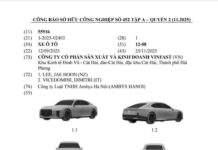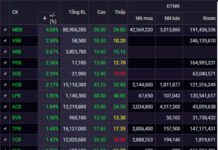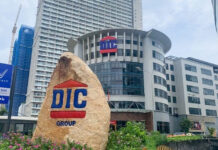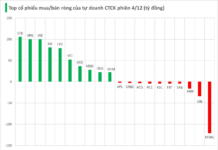The stock market witnessed a more distinct trend from the first two trading sessions of the new week. The stocks VIC, VHM, GAS, MSN… attracted impressive capital inflows, but it was not enough to offset the pressure from the banking stock group. VN-Index gradually declined in the second half of this morning’s session, despite the fact that the liquidity of this exchange reached a record high since the beginning of December last year.
The leading group of the index this morning still consisted of faces that have emerged since the Lunar New Year holiday: VIC increased by 5.8%, VHM increased by 3.16%, GAS increased by 3%, MSN increased by 2.42%, VRE increased by 5.33%, VNM increased by 2%…
These are the stocks that missed out on the impressive upward trend since the beginning of 2024 and have been going sideways for a long time. Money began to pour into this group significantly, with most of the mentioned stocks already achieving liquidity far exceeded the previous session, even within the morning session. Some stocks like VIC, MSN are expected to set records in terms of trading volume for several months. The top 10 most liquid stocks in the market this morning included VHM, VIC, VNM, MSN, VRE. These are also large trading stocks rarely showing strong price increases. Other stocks mostly declined: SSI, VN, with the highest liquidity of 688.2 billion VND and 562.6 billion VND, saw corresponding price decreases of 1.43% and 2.37%.
Out of the 38 stocks on HoSE traded with a liquidity of over 100 billion VND, 18 stocks increased in price and did not include any banking stocks. Other representatives included EVF with 101.7 billion VND and a price increase of 3.85%; DPM with 127.8 billion VND and a price increase of 3.23%; POW with 143 billion VND and a price increase of 2.61%; DCM with 157.5 billion VND and a price increase of 2.06%; DGC with 280 billion VND and a price increase of 1.57%…
Only 6 out of 27 banking stocks were still in the green, notably PGB increased by 8.24% and MSB increased by 2.63%. The leading banking stocks creating downward pressure on VN-Index were CTG decreased by 1.84%; VPB decreased by 1.01%; MBB decreased by 1.04%. The securities group also only had 4 stocks increasing on the exchanges, but the number of decreases was 6 times higher. Besides SSI and VND, there were also VCI decreased by 1.89%, FTS decreased by 1.03%, MBS decreased by 2.57%, VIX decreased by 2.23%, AGR decreased by 2.02%…

VN-Index was under pressure from the banking stocks, thus it could not make a breakthrough, and even slid towards the end. The index reached its peak at 10:15 am, 9.5 points above the reference, but by the end of the session, it only had +4.42 points (+0.37%). The breadth at the peak was very good with 239 stocks increasing/189 stocks decreasing, but by the end of the session, there were 211 stocks increasing/269 stocks decreasing. Thus, the selling pressure had a fairly wide spread. Due to the presence of the financial group (banks, securities) in the decline, the liquidity of the declining group accounted for as much as 57.7% of the total HoSE trading volume. The financial group also caused liquidity to concentrate on deep-loss stocks. Specifically, VN-Index had 64 stocks with an increase of over 1%, accounting for 31% of the exchange, while in the declining side, there were 75 stocks with a decrease of over 1%, and liquidity concentrated at 40%.
However, the positive point is that money is still being poured into blue-chip stocks that have not increased much in recent times. VIC, VHM, MSN, GAS, VNM… are typical examples. This group cannot completely replace banking stocks, but at least it can balance and maintain a green color for the index. Without this positive change, banking stocks will exert too much pressure on the general sentiment and it will be difficult to maintain the current level of differentiation.
It is normal for VN-Index to face difficulties at the moment when the leading banking stocks weaken. Previously, in January, the banking group had once weakened, but then continued to rise in early February, before Tet. At this point, other supporting stocks were unable to increase. The current change is a good signal showing that money is flowing more strongly.





































